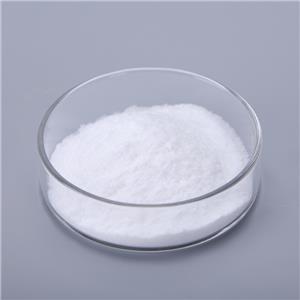Description:
Sulbactam sodium is a medication that is commonly used in combination with certain antibiotics to enhance their effectiveness.
Here is some information about Sulbactam sodium and its uses:
Mechanism of Action: Sulbactam is a beta-lactamase inhibitor. Beta-lactamase is an enzyme produced by some bacteria that can inactivate certain antibiotics like penicillins and cephalosporins.
Sulbactam works by inhibiting beta-lactamase enzymes, thereby protecting the accompanying antibiotic from being broken down and allowing it to effectively kill the bacteria.
Combination Therapy: Sulbactam sodium is often combined with antibiotics such as ampicillin to create a combination therapy that is effective against a broader range of bacteria.
This combination is especially useful in treating infections caused by bacteria that produce beta-lactamase and are resistant to standard antibiotics.
Infections: Sulbactam sodium in combination with antibiotics is used to treat various bacterial infections such as pneumonia, urinary tract infections, skin and soft tissue infections, intra-abdominal infections, and certain types of meningitis.
It is particularly effective against bacteria that have developed resistance to standard antibiotic treatments.
Hospital-Acquired Infections: Sulbactam sodium is commonly used in hospitals to treat infections that are acquired during a hospital stay or are resistant to standard antibiotics.
It is an important tool in combating multidrug-resistant bacteria in healthcare settings.
Dosage Form: Sulbactam sodium is typically administered intravenously (IV) in a hospital setting.
It is usually given in combination with the appropriate antibiotic based on the type of infection being treated and the susceptibility of the bacteria causing the infection.
Side Effects: Common side effects of Sulbactam sodium may include diarrhea, nausea, vomiting, skin rash, and allergic reactions.
It is important to inform healthcare providers of any allergies or sensitivities before starting treatment with Sulbactam sodium.
Precautions: Sulbactam sodium should be used with caution in individuals with a history of allergies to beta-lactam antibiotics.
It is important to follow the prescribed dosage and administration schedule to ensure the effectiveness of the treatment and minimize the risk of developing antibiotic resistance.
Consultation: Treatment with Sulbactam sodium should be overseen by a healthcare provider, who can determine the appropriate antibiotic combination and dosage based on the specific infection being treated and the patient's medical history.
In summary, Sulbactam sodium is a beta-lactamase inhibitor that is used in combination with certain antibiotics to treat a variety of bacterial infections, particularly those caused by multidrug-resistant bacteria or organisms that produce beta-lactamase.
Its role in enhancing the effectiveness of antibiotics makes it a valuable tool in the fight against antibiotic-resistant infections.
Product Forms: Injectable Solution, Oral Capsules/Tablets
Payment method: T/T in advance, Paypal, Western Union, L/C, etc.
Shipping ways: Courier, Air, Sea, Road
Storage Condition: Dry, dark, and at 0 - 4 C for short term (days to weeks) or -20 C for long term (months to years).

 China
China




